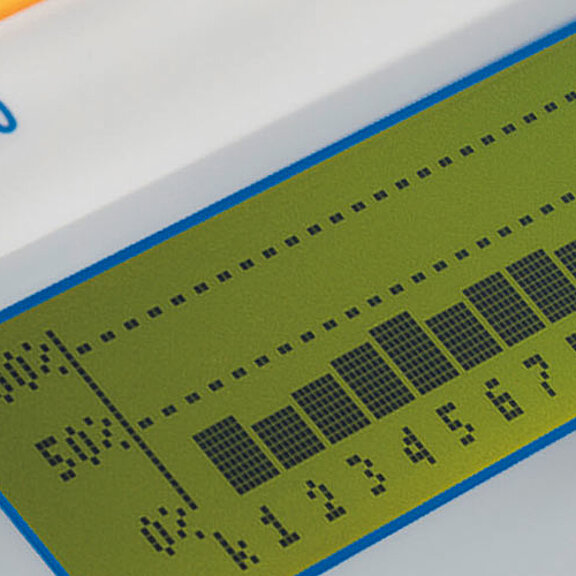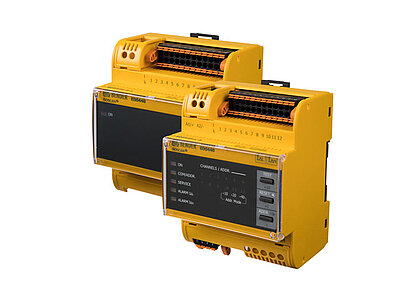

RCMs (Residual Current Monitors) monitor residual currents in electrical installations, indicate the present value and signal when the response values are exceeded.
The devices are designed for signalling and/or switching. They comply with DIN EN 62020 (VDE 0663) “Electrical accessories – Residual current monitors for household and similar use (RCMs) (IEC 62020)”.
In contrast to RCMs, RCDs (residual current protective devices) are designed to provide protection in electrical installations in accordance with the standard IEC 60364, e.g. in bathrooms. RCDs always cause a shutdown.
All conductors of the outgoing circuit to be monitored (except the PE conductor) are routed through a measuring current transformer. In a fault-free system, the sum of all currents is equal to zero so that no voltage is induced in the measuring current transformer. If a fault current (IΔ) flows via PE or other paths, the difference in current in the measuring current transformer generates a current flow which is detected by the RCM. This measurement method applies to RCMs for pure AC current and pulsating DC fault currents (type A in accordance with IEC 60755).
AC/DC sensitive RCMAs and RCMBs of type B require special measuring current transformers and a special measurement method to detect both DC and AC currents of different frequencies
RCMs differ in terms of type, frequency and waveform of the currents that they are capable of detecting:
RCM series: Type A residual current monitors in accordance with IEC 60755 for monitoring AC currents (42…2000 Hz) and pulsating DC fault currents.
RCMA, RCMB series: Type B residual current monitors in accordance with IEC 60755 for monitoring AC currents, pulsating and smooth DC fault currents (0…2000 Hz).
RCMS series: Multi-channel type A and B residual current monitoring systems in accordance with IEC 60755 for monitoring AC currents, pulsating and smooth DC fault currents (0 (42)…2000 Hz).
| Name | Category | Size | Language | Timestamp | D-/B-Number |
|---|---|---|---|---|---|
| Product Overview - Residual Current Monitoring | Product Overviews | 8.0 MB | EN | 2025/04/0202.04.2025 | |
| Making Gains in Safety - NürnbergMesse Relies on the Monitoring Devices from Bender | Technical article | 276.7 KB | EN | 2019/05/1313.05.2019 | |
| Practical Expertise: Practical implementation of the central earthing point | Technical article | 20.0 B | EN | 2023/04/2828.04.2023 | |
| Residual current technology in everyday university life | Technical article | 20.0 B | EN | 2023/07/2626.07.2023 | |
| Hightech in a confined space | Technical article | 20.0 B | EN | 2023/07/2626.07.2023 | |
| Eight years of Bender residual current technology in the publishing building for the Süddeutsche Zeitung in Munich | Technical article | 20.0 B | EN | 2023/07/2626.07.2023 |
Products

Insulation fault locator for localisation of insulation faults in main circuits

Insulation fault locator for localisation of insulation faults in main circuits
